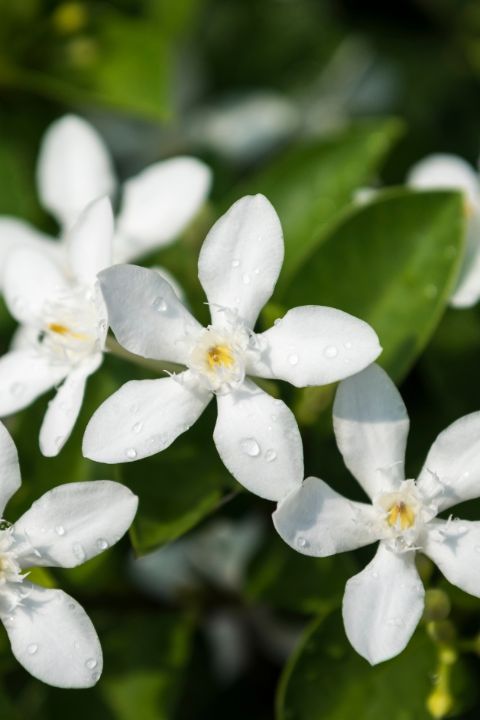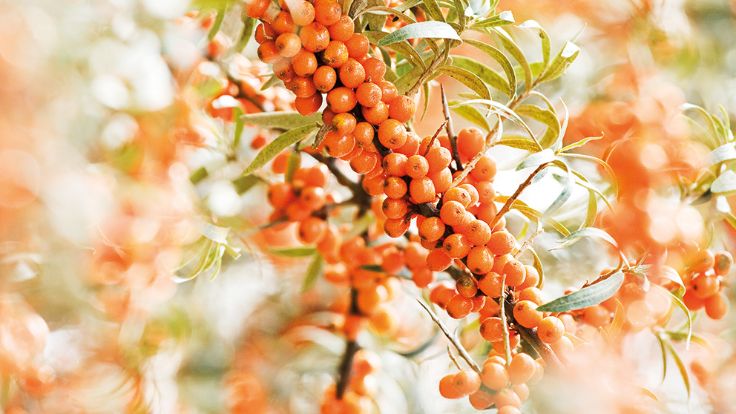
Family-Friendly Biodynamics - Spring
Spring Garden Ideas
A series of gardening tips with Katrina Wolff from Blue Borage
Spring brings us more light, colour, beauty and joy
Is your garden looking stunning right now?
It seems we’re all feeling more alive, alert, and ready to be more active outside.
The trees are waking up from a long winter sleep and want to party. Along with the trees, the blossoms are popping open and the garden centres are full of seedlings for summer. There’s an open invitation to everyone: ‘let’s get into the garden!’
There is one downside, or challenge with spring gardening: it’s not just the blossoms and edibles that have sprung to life, the weeds have also burst into action, and within the metaphor of a party a lot of people see the weeds as gatecrashers - uninvited guests.
Is that really the case though?
Could we shift how we view the weeds, and learn to use them in our composting systems? Some weeds need to be handled with special attention, which is where biodynamic methods are remarkable. A new fascination for me at Blue Borage is to use Jasmine for weaving. It’s an invasive species in one of my teaching gardens, and there’s a lot of it to work with. I’ve begun making wreaths, and am hoping that when these dry out entirely, then they will become an attractive woven compost enclosure.
No matter what the weeds are that you have to work with, there is never any need to resort to toxic chemicals.
There’s a Spring tendency to fill our gardens with all the food we’ve missed - tomatoes, cucumbers, beans, sunflowers, pumpkins, courgettes, berries, all the flowers, and a wide range of salad greens. There’s so much flavour to be grown.
What’s often missing in this picture?
We can easily forget to include plants that care for the soil, plants that help conserve precious water, and those that offer beneficial nutrients to all the plants around them - even though they may never feature in a meal for your family, these companion plants have a useful role in your spring garden.
Groundcover plants, to protect the soil: Thyme, Oregano, Pennyroyal, Selfheal, Lawn Chamomile, Clover and others.
Plants with deep taproots, to help bring moisture up to the surface, and save you having to dig much at all: Dandelion, Dock, Comfrey, Daikon Radish, Carrots, Celery, Parsley and Fennel.
Plants that are used in the biodynamic compost preparations: Yarrow, Chamomile, Stinging Nettle, Valerian, Dandelion.
Plants that are just really popular for boosting your compost, sometimes called ‘compost activators’: Comfrey, Borage, Calendula, Plantain, Clover,
Better soil is accessible to all of us
How?
-
Composting using biodynamic methods.
-
Worm farming while being mindful what goes into the worm farm.
-
Keeping the soil covered with plants all year round.
-
Caring for bees and other animals, ensuring all beings are protected from toxic sprays on their food.
-
Teaching our plants to drink deep, and develop strong root systems. If you worry your plants aren’t developing deep root systems, then plant some Dandelions to do the work of digging deep, or let a few Dock plants flourish where they pop up.
Interested in transitioning to biodynamic methods?
Here are some ideas to get started:
-
Create a green waste management plan, figure out how to make friends with all the weeds on your property, and turn each one of them into a useful resource for the garden. If you’d like help with this task, then Katrina at Blue Borage can help you.
-
Use the biodynamic preparations, even if you just learn how to use them a bit at a time. Learn more here.
-
You may be a long way from making your own compost preparations, but just growing the herbs is useful for your compost: Yarrow, Chamomile, Dandelion, Valerian and Stinging Nettle.
-
Get the Weleda Gardening book.
-
Join a gardening group or set one up, and learn with friends.
-
Set up a workplace project to build and plant a garden in the workplace, or go help at a community gardening project as part of the Save Earth’s Skin campaign.
Let’s consider how our spring gardens can play a role in saving earth’s skin:
-
Keep the soil covered by planting densely. This will mean ignoring some of the traditional plant spacing recommendations used by commercial growers. You may wonder if more plants will mean more water? The answer is no. It’s mysterious how this works, and is good proof that bare soil really does result in water evaporation, meaning that less plants in a bed need more water because of what’s being lost in the heat.
- Mulching your garden. You don’t need to use pea straw (organic pea straw is very hard to source, and commercial pea straw can be the cause of many problems in your garden, please be careful). Other forms of mulch are:
- pine needles, well broken down are an excellent mulch for strawberries and other plants that like their soil to be slightly acidic.
- leaf mould is nature’s mulch for trees. You can research the particular qualities of the leaves you’ve been storing, and decide where that leaf mould is best used. If in doubt, pop it into your compost to cook for a bit.
- compost that’s nearly finished can also be an excellent mulch material - just be aware that weed seeds will not have been destroyed, so you could have a bit of extra weeding to do.
- raw wool, if you can find some.
- damp cardboard, with arborist mulch over it.
- there are so many more options, I hope this gets you thinking!
Another good use for your ‘nearly done compost’ is to create a no-dig garden bed with it at the bottom. Some people call this lasagne gardening. I think it’s similar to hugelkultur gardening, where rotting logs can be placed inside your garden bed to act like a sponge soaking up excess moisture and keeping your plants hydrated in dry periods.
There are so many ways to save earth’s skin - whatever one you choose to do, please share your gardening activities on social media - tag us at @WeledaNZ and use the hashtag #saveearthsskin
We can all pay more attention to the soil.
The health question is a question of nutrition, The nutrition question is a question of agriculture, The agricultural question is a social question.
This spring, I suggest that we plant our gardens in a way that gives back to the Earth more than we take. By constantly improving the soil, we can leave our gardens in a better state than we found them, so future generations can continue the good work.
Please join the campaign to raise awareness of the importance of soil. Pick one of the suggestions above and enter the competition to win a $250 monthly prize pack on our pledge page here.













